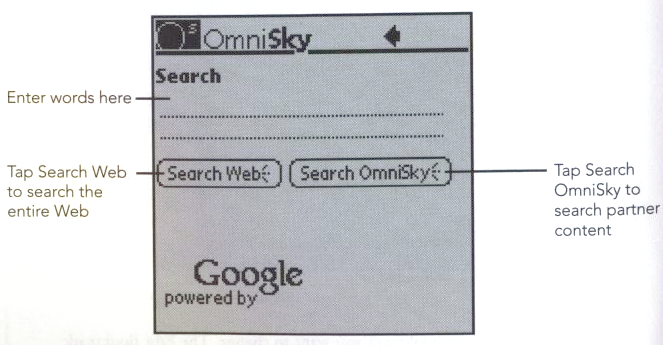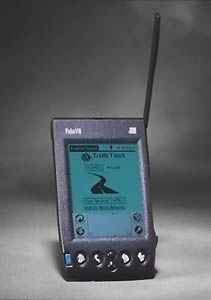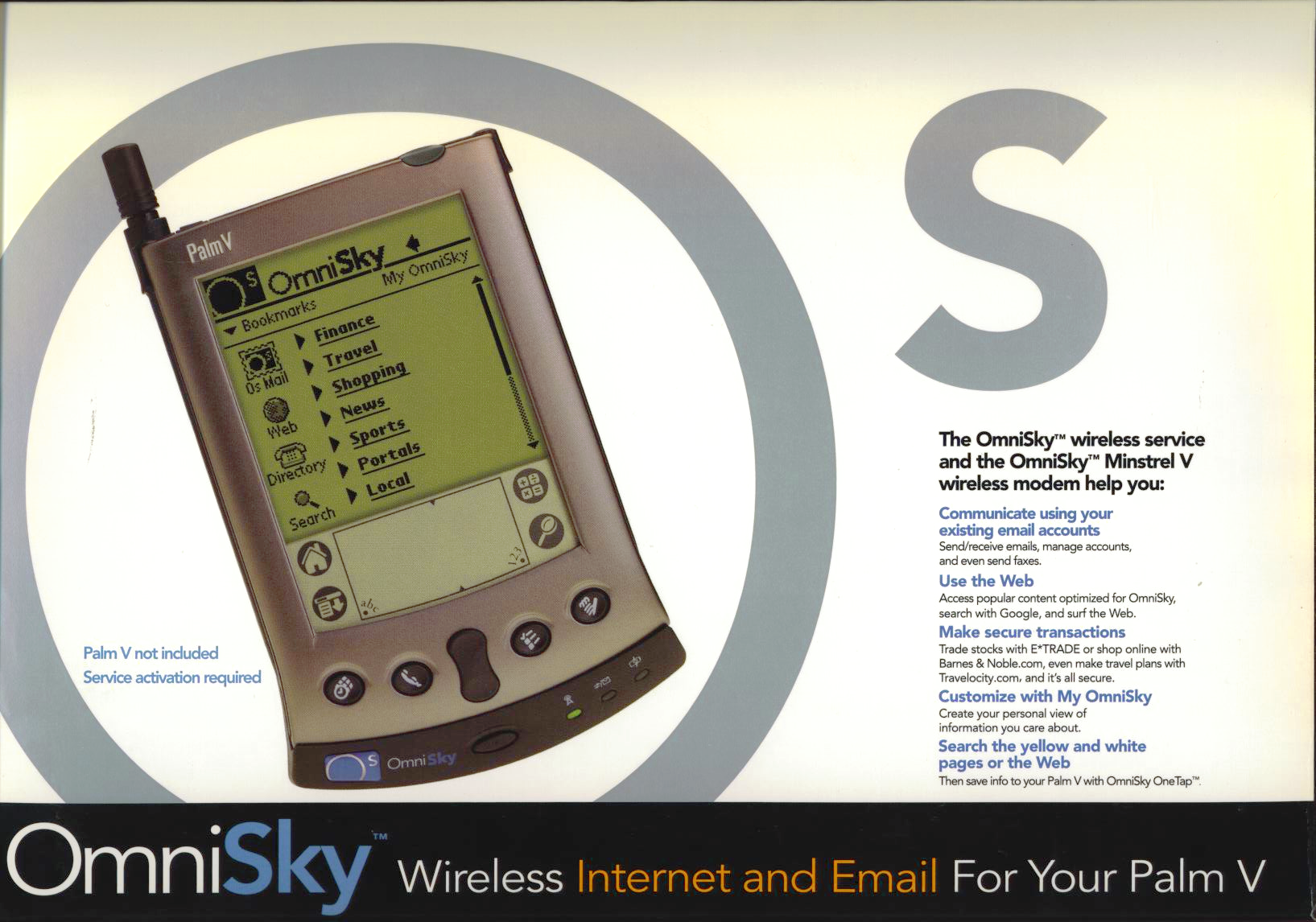
OmniSky:
Google's first touchscreen mobile product
Greg Bryant

In 1998 I started building early mobile applications for a client, Sony, on a variety of prototype devices.
The most interesting was the Palm VII, because it had a graphics touch-screen, not just a
texting screen controlled by buttons. It was also location-aware, so the application I built, which shipped
with the Palm VII in 1999, was to become one of the two first location-based services
on a consumer web-enabled device. It was called TrafficTouch, and gave the user MetroTraffic
reports for traffic around them.
After the Palm VII's release, I was the only independent consultant who could build these
mobile apps. I started a company, WorkSpot, secured a first client, eBay, and convinced
Palm to make WorkSpot their first official mobile app builder. My office was in downtown
Palo Alto, so we became the first boutique mobile app development house.
I was asked by Palm to attend a first technical meeting for a new start-up, at the time
called OpenSky. The notion was to create a better Palm VII, outside of Palm. Eventually
it became OmniSky, and my team at WorkSpot built the client software, and much of the
server software.
The client software was intended to resemble a portal, and we partnered with content providers to re-work their experiences for the mobile screen.

We provided a primitive web browser as well, for the first time in a graphic way on a mobile device. But this meant that we needed a search engine. OmniSky had fairly close corporate ties with Inktomi, which provided search results for Yahoo. This was unfortunate, because WorkSpot's neighbor in downtown Palo Alto, a young start-up called Google, provided better search results. This bugged me a great deal, and I argued endlessly with my client about the importance of providing the best possible mobile experience for searching. The screen was small and the connection was slow, so digging through search results would be even more tedious and time-consuming.
My final argument in favor of Google: we were planning on providing a flat-rate data plan to our users. This meant that we should do everything possible to reduce data transfer for any particular use. Google results were better, and so people would pull down less data. This was a reasonable argument in 1999, since people didn't constantly need data ... this would only be for occasional use. We only needed to reduce the data demand for each occasion.
Eventually, Google's team came to WorkSpot, excited about the possibility of a mobile app. To help with my pitch, they'd created a minimized version of their site, which I integrated into the prototype and showed to OmniSky, along with my personal assurance that Google had a good chance of beating Yahoo in the marketplace.
OmniSky sealed the deal with Google, and my team fully integrated it into the client software. This was Google's first official integration with a touchscreen mobile device, an experience we've all become quite used to since.




